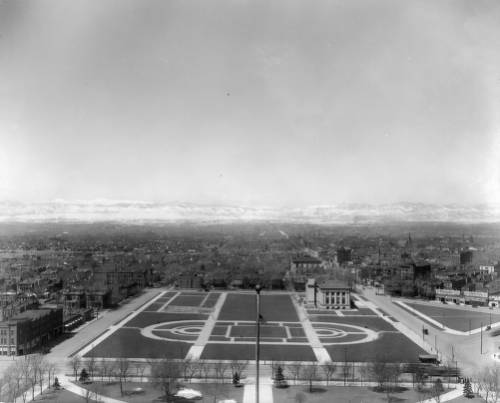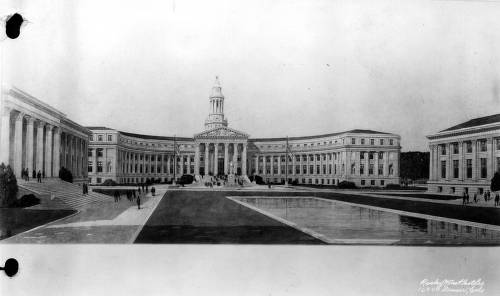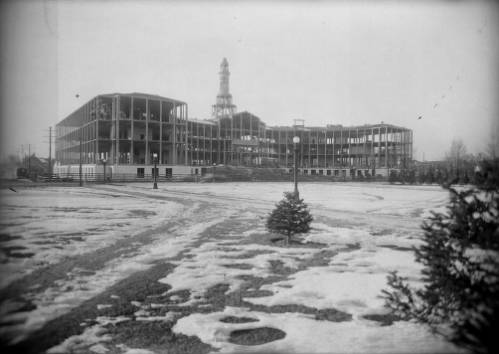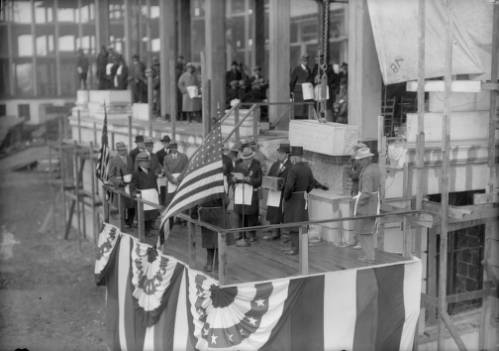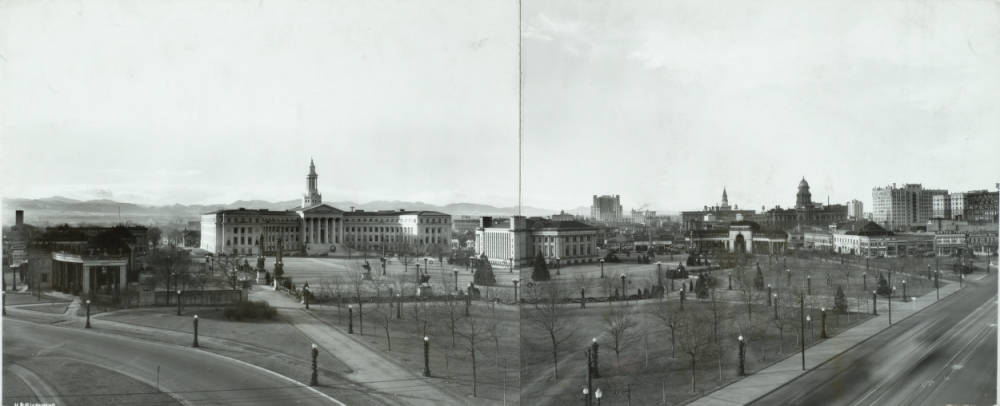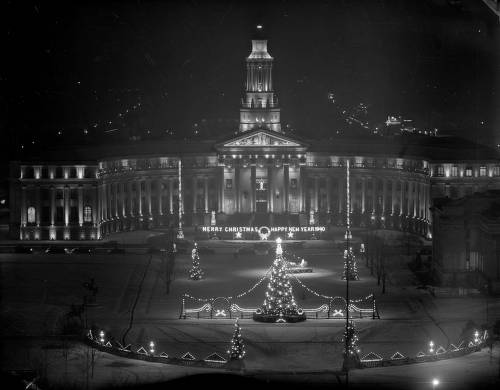
A snapshot of history
Exploring Civic Center Park and Denver’s City and County Building: A Historical Journey
Look west from the State Capitol dome, and you’ll behold Civic Center Park, a crucial element of the City Beautiful Plan crafted in 1906 by Charles Mulford Robinson. Mayor Robert Speer drew inspiration from the 1893 Chicago World’s Columbian Exposition, and his unwavering support for this visionary plan persisted through his terms from 1904 to 1912 and again in 1916 until his passing in 1918. Originally slated for the north side of W. Colfax Ave, Denver’s City and County Building found its home on the west side of Civic Center Park due to political and legal challenges. The planning-to-completion journey spanned 26 years.
In the park’s initial plans, the Carnegie Library occupied the north wing, now transformed into the McNichols Building, a vibrant hub of contemporary arts and culture. The south wing, envisioned for a possible art museum or memorial, remains an open green space to this day.
Constructed between 1929 and 1932 at a cost exceeding $5.5 million, the City and County Building has stood prominently since its completion, undergoing a restoration in the 1970s. The 1931 construction image captures a snapshot of its evolution.
On February 21, 1931, the granite cornerstone, engraved with “Laid by the Most Worshipful Grand Lodge AF&AM of Colorado” (AF&AM – Ancient Free & Accepted Masons), was laid into place during a ceremony witnessed by crowds. The official dedication occurred in 1932 or early 1933, with an image of the ceremony featuring participants in Masonic aprons and a time capsule.
To the southeast, the Greek Amphitheatre, constructed in 1919, provides an open-air theatre framed by a semicircular colonnade. It was created with seating up to 1200 spectators and open stage that is framed by a 210-foot semicircular colonnade. To the north of the Amphitheatre, the Voorhies Memorial, completed the same year, stands as a testament to John Hart Pemberton Voorhies, a prosperous miner. Voorhies left his fortune to fund this memorial gateway. In this picture below you can see the two buildings that were added to the park.
In 1914, D.D. Sturgenon, one of Denver’s earliest electricians, aimed to bring festive joy to his ailing 10-year-old grandson during his final Christmas. Innovatively, he fashioned ordinary white bulbs by attaching them to an electrical wire and dipping them in red and green paint. This creative endeavor culminated in the decoration of a tree outside his grandson’s window, marking the inception of the world’s first recorded outdoor electrical Christmas display.
Five years later, in 1919, following the dedication of the park, Denver’s lone electrician, John Malpiede, introduced the inaugural Christmas display featuring red and green lights. Adorning the upper face of the Greek Theater, these lights were accompanied by evergreen boughs on park lamp posts. The tradition blossomed further in 1920 with the installation of a Christmas tree in the park’s center, heralding the commencement of a cherished holiday decorations tradition. Subsequently, the decorations evolved into grander spectacles. By 1926, John successfully convinced the mayor to illuminate City Hall near Cherry Creek. The 1950s witnessed a significant expansion, with over 40,000 lights adorning Civic Center Park and the City and County Building.
While the holiday lighting tradition still persists to this day, it sparks ongoing debates about free expression, politics, and religion on city government property.
Thanks for wandering with us,
The Wandering Couchs

